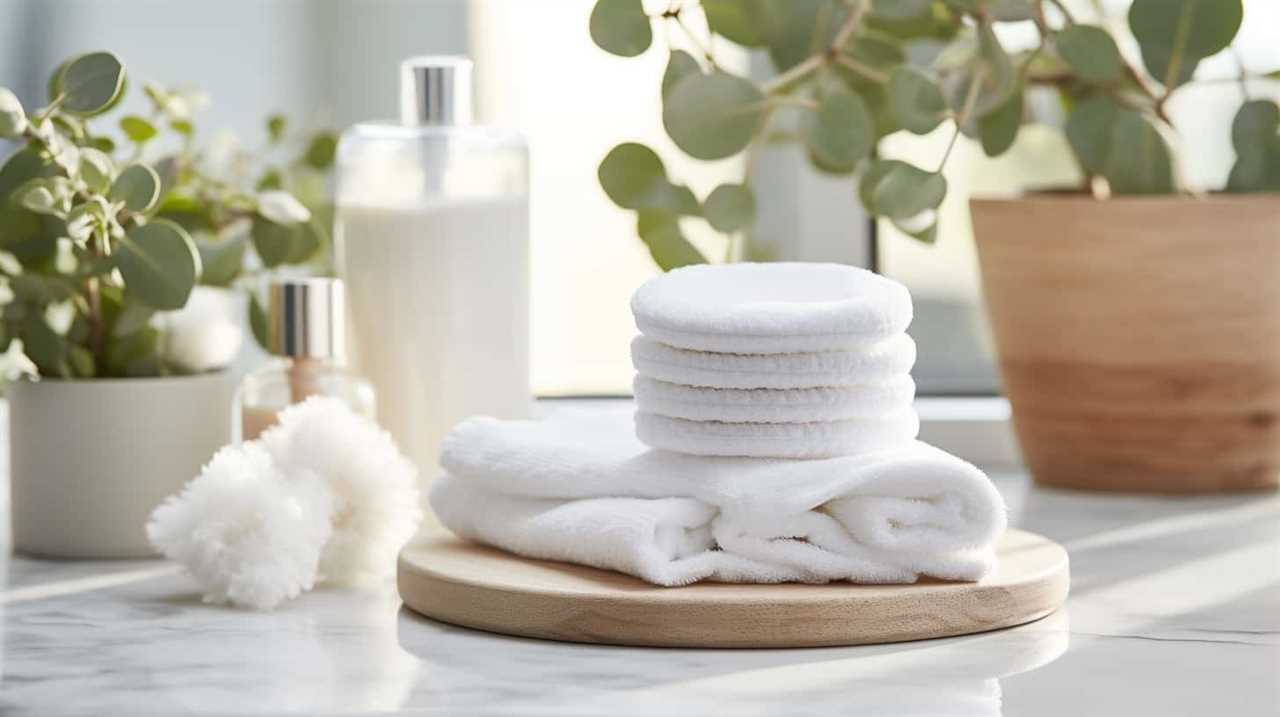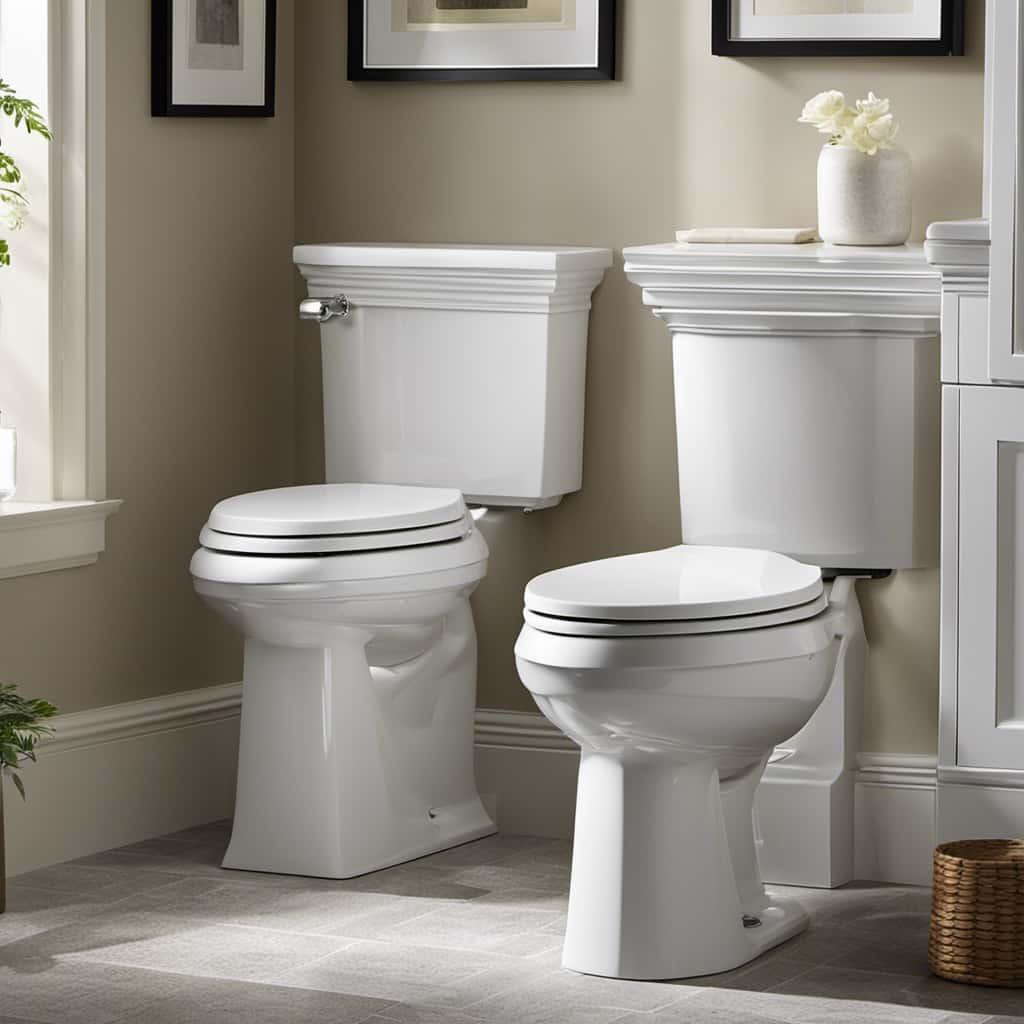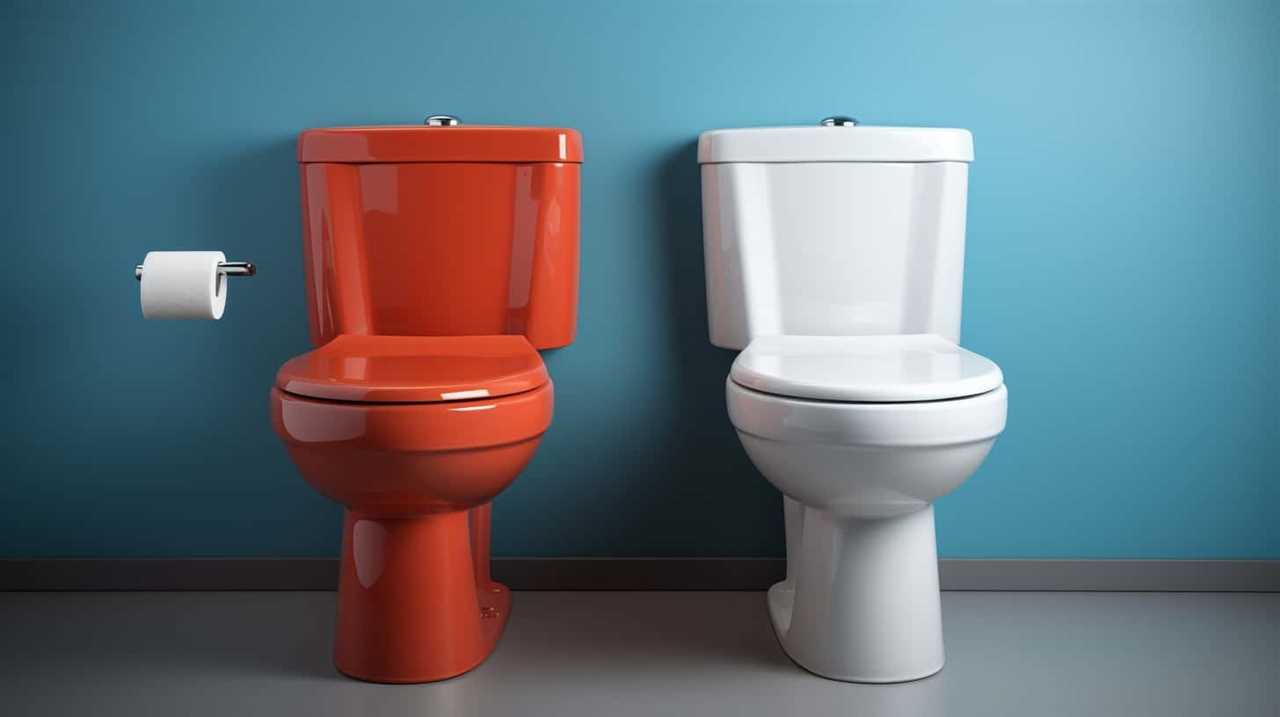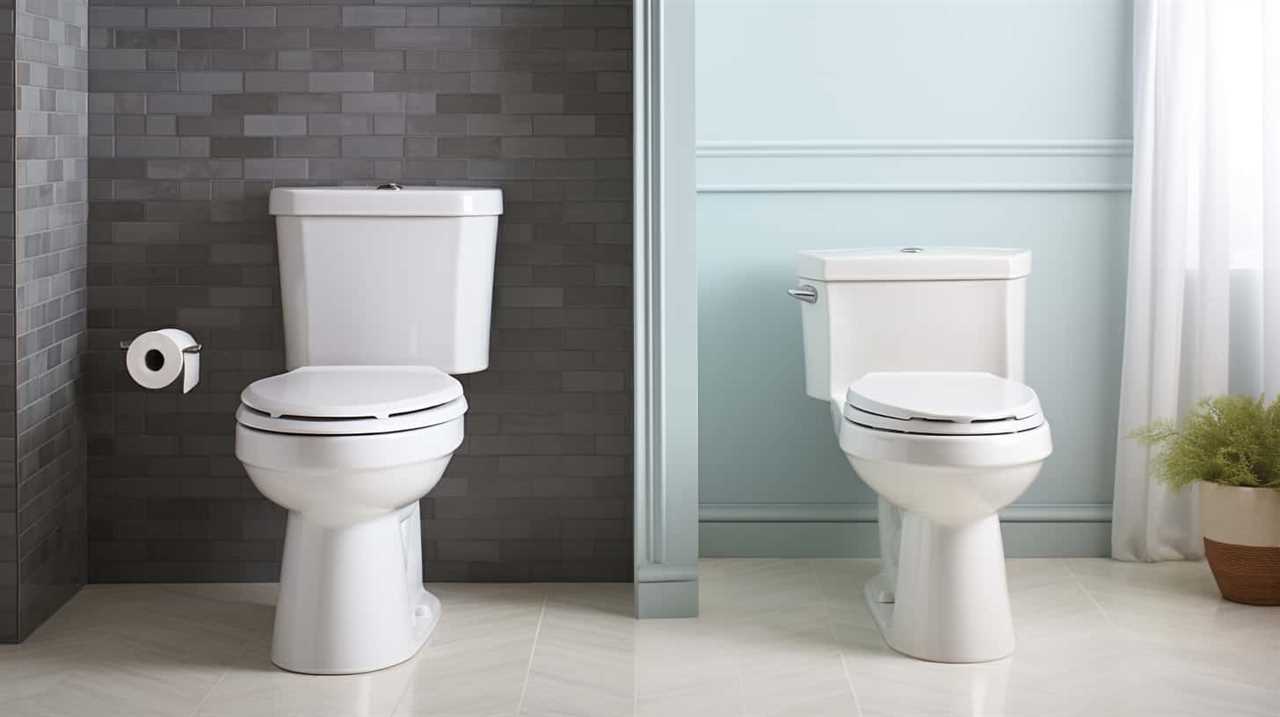Have you ever thought about why we can’t just flush tissues down the toilet like we can with toilet paper? It might seem like a minor inconvenience, but there are essential reasons for this difference.
In this article, we’ll delve into the technicalities of tissues versus toilet paper, the impact on plumbing systems, the environmental consequences, and proper disposal methods.
Get ready to master the art of responsible flushing and understand why tissues and toilets don’t always go hand in hand.
Key Takeaways
- Tissues are not designed to break down quickly in water like toilet paper, leading to clogs and blockages in the plumbing system if flushed.
- Flushed tissues can cause costly sewer system maintenance, as they accumulate and lead to blockages.
- Flushing tissues adds to paper waste that needs to be managed and contributes to environmental pollution.
- Proper disposal methods for used tissues include disposing of them in a trash bin to maintain hygiene and prevent the spread of germs.
Tissues Vs. Toilet Paper: Understanding the Difference
When it comes to flushing materials down the toilet, it’s essential to understand the difference between tissues and toilet paper.

Tissues are commonly used for personal hygiene and are made from a delicate tissue manufacturing process. They’re soft, absorbent, and often infused with lotions or fragrances.
However, unlike toilet paper, tissues aren’t designed to break down quickly in water. This is because tissues are made to be more durable and retain their strength, which can lead to clogs and blockages in the plumbing system if flushed.
It’s important to note that there are tissue alternatives available, such as flushable wipes, that are specifically designed to disintegrate quickly and minimize the risk of plumbing issues.
The Composition of Tissues and Its Impact on Plumbing
To understand the impact of tissues on plumbing, it’s important to examine their composition and how it affects the overall functioning of the system. Tissues are made from a combination of wood pulp and water, which is then processed through the tissue manufacturing process. This process involves breaking down the wood fibers and removing impurities to create a soft and absorbent material.

However, the composition of tissues makes them less suitable for flushing down the toilet compared to toilet paper.
Here’s why:
- Absorbency: Tissues are designed to be highly absorbent, allowing them to retain moisture. When flushed, they can quickly soak up water and become heavy, leading to clogs in the plumbing system.
- Durability: Tissues aren’t as strong as toilet paper, which means they can easily break apart when flushed. These small pieces can accumulate in the pipes and cause blockages over time.
- Dissolvability: Unlike toilet paper, tissues aren’t designed to dissolve easily in water. This means that even if they do make it through the pipes, they can still contribute to blockages further down the line.
- Alternative uses: Instead of flushing tissues, consider using them for alternative purposes such as cleaning, wiping surfaces, or even composting. This way, you can avoid potential plumbing issues while still making the most out of your tissues.
How Flushing Tissues Affects Sewer Systems
The impact of flushing tissues on sewer systems can be significant. When tissues are flushed down the toilet, they can cause a variety of issues that require costly sewer system maintenance.
One of the main problems is tissue degradation. Unlike toilet paper, tissues aren’t designed to break down easily in water. They’re thicker and often contain additives like lotion, which further hinders their disintegration. As a result, flushed tissues can accumulate in the sewer system, leading to clogs and blockages.

These blockages can cause backups and overflows, damaging pipes and potentially contaminating water sources. To prevent such issues, it’s important to educate the public about proper disposal methods for tissues and encourage the use of toilet paper, which is specifically designed to dissolve quickly and not cause harm to the sewer system.
Environmental Consequences of Flushing Tissues
Flushing tissues down the toilet not only impacts sewer systems, but also has significant environmental consequences. Here are four reasons why flushing tissues can be harmful to the environment:
- Paper waste management: Tissues are made from paper pulp, which comes from trees. When tissues are flushed, they end up in wastewater treatment plants, where they need to be removed. This adds to the already significant amount of paper waste that needs to be managed.
- Environmental pollution: Tissues can take a long time to break down in water. As they travel through the sewer system and eventually end up in bodies of water, they contribute to pollution. The chemicals used to make tissues, such as bleach and dyes, can also contaminate the water and harm aquatic life.
- Wastewater treatment challenges: Flushing tissues can clog pipes and cause blockages in wastewater treatment plants. This not only disrupts the normal functioning of the system but also requires additional resources and energy to fix the issues.
- Impact on ecosystems: The accumulation of tissues in bodies of water can disrupt the balance of ecosystems. It can smother aquatic plants and organisms, reduce oxygen levels, and harm the overall health of the ecosystem.
Proper Disposal Methods for Used Tissues
When it comes to disposing of used tissues, we need to consider the proper methods to minimize environmental harm.
To maintain hygienic conditions and prevent the spread of germs, it’s important to dispose of used tissues properly.

Flushing tissues down the toilet isn’t recommended as it can lead to clogged pipes and sewage backups.
Instead, the best way to dispose of used tissues is by placing them in a lined waste bin. This prevents any potential health risks associated with handling contaminated tissues and ensures that they’re contained.
It’s also important to wash your hands thoroughly after disposing of tissues to further reduce the risk of spreading bacteria or viruses.
Frequently Asked Questions
How Does Flushing Tissues Differ From Flushing Toilet Paper?
When comparing flushing habits, tissues differ from toilet paper in their composition and breakdown. Understanding these differences is crucial as flushing tissues can lead to clogs and damage to plumbing systems.

What Are the Components of Tissues and How Do They Affect Plumbing Systems?
The components of tissues, such as fibers and additives, can cause clogs in plumbing systems when flushed. These flushing differences can lead to costly repairs and environmental consequences. Proper disposal methods include throwing tissues in the trash.
How Does Flushing Tissues Impact Sewer Systems?
Flushing tissues down the toilet can cause sewer system overload and damage to plumbing infrastructure. It is important to understand the consequences of this action to prevent costly repairs and maintain the functionality of the sewer system.
What Are the Environmental Consequences of Flushing Tissues?
Flushing tissues down the toilet can lead to environmental pollution and water contamination. The chemicals and fibers in tissues can disrupt water ecosystems and harm aquatic life. It is crucial to dispose of tissues properly in order to protect the environment.
What Are the Proper Methods for Disposing of Used Tissues?
Proper disposal methods for used tissues include placing them in a lined trash bin or flushing them down the toilet if they are labeled as flushable. Recycling options for tissues are limited due to their low quality and contamination.

Conclusion
In conclusion, it’s crucial to understand why we can’t flush tissues down the toilet. The composition of tissues differs from toilet paper, making them less suitable for flushing. Flushing tissues can lead to clogs in plumbing systems and cause damage to sewer systems.
Additionally, the environmental consequences of flushing tissues are significant. To ensure proper disposal, it’s essential to use appropriate waste bins for used tissues.
So, why risk the potential problems? Let’s make the right choice and dispose of tissues responsibly.










